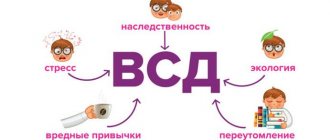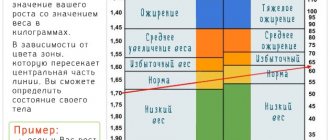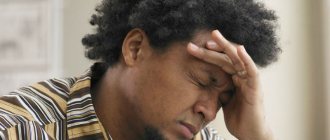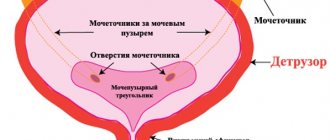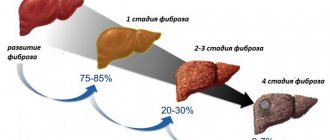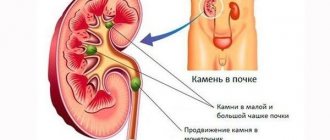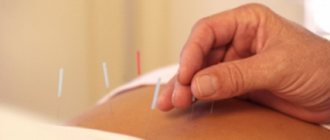The muscles of the legs and feet are subject to involuntary contractions called spasms or tonic cramps. This condition is accompanied by acute pain, which can last 3-5 minutes, and a feeling of severe tension, “petrification” of the muscles. Coping with cramps is easy if you know their causes and several effective treatment methods.
Why do my legs cramp?
Muscle contractions can occur in both healthy people and people suffering from serious chronic diseases. In the first case, the causes of seizures are as follows:
- strong and prolonged tension of a certain muscle group;
- staying the leg in one position for a long time;
- low ambient air or water temperature;
- a sharp increase in load with poor training;
- seasonal deficiency of microelements and vitamins.
In healthy adults, leg cramps occur rarely and pass quickly without recurring in the future. If tonic spasms appear regularly and are characterized by a duration of several minutes, it is necessary to look for provoking factors in disorders of the internal organs and systems. There are 3 possible dangerous causes that cause leg cramps:
- water and electrolyte imbalance;
- improper blood circulation in soft tissues;
- neurological diseases.
Finding out on your own why muscle contractions occur is difficult. To make a diagnosis, you will have to visit a specialist, describe in detail the clinical signs accompanying seizures, and take the prescribed tests. During the consultation, it is important to indicate at what time of day the problem occurs, how often, and name the muscle group that hurts more.
Leg cramps at night - causes
Intense spasms in soft tissues indicate the accumulation of lactic acid in them. Its amount increases if a person sleeps in a hot and cramped room with a lack of oxygen. Another common reason why legs cramp at night is vascular disorders in combination with muscle overload the day before. Due to their overstrain, the outflow of venous blood during sleep is reduced, and the influx of biological fluid in the arteries is slowed down. This causes spastic phenomena, pain and a feeling of “petrification” of the limb.
Cramps in the calves of the legs
The lower legs are subject to involuntary contractions more often than other muscles, as they experience greater stress during the day. Tonic leg cramps can occur for the following reasons:
- dehydration;
- cirrhosis of the liver;
- varicose veins;
- hemodialysis;
- plasma transfusion;
- inadequate treatment with diuretics;
- chronic renal failure;
- intoxication of the body due to a bacterial or viral infection;
- Raynaud's disease;
- cerebrovascular accident;
- epileptic seizures with convulsions;
- osteochondrosis;
- knee joint injuries and bone fractures;
- spastic paralysis;
- heavy bleeding;
- endocrine pathologies;
- improper rehydration therapy.
Brief leg muscle cramps are also observed in pregnant women, especially in the second and third trimester. For full growth and formation of bone structures of the fetus, an increased supply of calcium and potassium is required, therefore, in many expectant mothers, the concentration of these microelements in the body drops and short-term cramps occur.
Toes cramp
Contraction of the muscles of the feet appears either due to deterioration of blood circulation in small arteries and capillaries, or against the background of abnormalities of the ligaments and joints. Cramps of the foot and toes are observed due to the following factors:
- obliterating endarteritis;
- diabetes;
- transverse flatfoot;
- smoking;
- violation of tissue utilization of carbohydrates;
- increased load on the toes.
Common Causes
Depending on the cause, spasms may be episodic or recurring. In the second case, the frequency is 7, 30 days, six months, a year.
The main provoking factor is a violation of blood composition. An imbalance occurs against the background of a deficiency of beneficial elements and vitamin D in the body.
Table. The main causes of seizures
| Cause | Description |
| Convulsions occur during the use of antacids (Almagel, Taltsid and other medications for heartburn, gastritis and flatulence) and adsorbents (Enterosgel, Smecta, Polyphepan). These medications prevent magnesium and calcium from being absorbed properly. When using diuretics, a “side effect” appears - the rapid removal of useful elements from the body. |
| Due to the increased production of the hormone cortisol in the intestine, calcium absorption deteriorates. It is excreted in increased quantities by the kidneys. |
| Most of the calcium is excreted in the urine, increasing the risk of kidney stones. |
| Convulsions are provoked by increased excretion of potassium. This happens in hot weather, as well as during intense sports training. |
| Cramps appear after a long walk or swimming. |
What to do if you have leg cramps?
Emergency methods for stopping spastic contractions:
- active limb massage;
- gentle stretching of the muscles of the foot or lower leg;
- tissue relaxation.
Sometimes the attack is felt in advance. A person feels tension, numbness and increasing nagging pain in the legs - cramps begin with these symptoms. If the following symptoms appear, you must:
- Change the position of the limb, rotate it.
- Try to relax your leg muscles as much as possible.
- Normalize blood circulation in the legs and feet.
Legs cramp at night - what to do?
The fastest way to combat cramps involves stretching the muscle. To eliminate night cramps in the legs, use your hands to pull your toes towards you. At the same time, you should try to fully straighten your knee so that the soft tissues relax. Too frequent leg cramps at night also happen - what to do:
- Quickly take a vertical position or sit down with your feet on the floor. It is advisable to walk on a cool surface.
- Gently rub the tense muscle. Stroking, patting the leg and shaking will help.
- Elevate your limbs by placing a high pillow or folded blanket under your heels.
How to relieve leg cramps?
Emergency treatment options for tonic spasms include firm pinching of the contracted muscles and pricking with a pin or needle. These methods instantly relieve nighttime leg cramps and sudden attacks during the day. If a tense limb is sharply pinched, bitten or pricked, the activated nerve endings will reflexively switch to another stimulus and the muscle will immediately relax.
How to get rid of leg cramps?
Regular or daily spasms of the legs and feet must be treated comprehensively. The constant use of the above-described emergency methods allows you to cope only with the symptoms of the pathology. To find out how to relieve leg cramps for a long time, you need to undergo diagnostics and determine the causes of tonic muscle contractions and consult with doctors.
Leg cramps - treatment
A single therapeutic regimen to get rid of tonic spasms has not been developed. You can choose the best way to treat leg cramps after identifying all the factors that provoke the pathology. First, you need to see a therapist and take a general blood test to assess the general condition of the body, muscles and circulatory system. Once a diagnosis has been made and the cause of seizures has been identified, further consultations are carried out by specialized specialists. Treatment is carried out by a cardiologist, neurologist, phlebologist or endocrinologist.
Home therapy for leg cramps involves following several important rules:
- Monitor water and electrolyte balance. In the hot season, increase the amount of fluid consumed.
- Choose the right shoes with good ankle support and sufficient instep. It is better to replace high stiletto heels with stable heels 3-4 cm high.
- Do a self-massage of your feet every day. It is useful to rub the muscles from the toes to the knee, even if there are no cramps.
- Do not overload your limbs. If you feel very tired in your legs, swelling and numbness in the muscles, rest and massage the soft tissues.
- Periodically take preventative doses of vitamins, calcium and potassium. This is especially necessary for pregnant women.
Leg cramps at night - treatment
If spasms occur during sleep, you should contact a cardiologist or vascular surgeon and do a Doppler ultrasound. The doctor will help identify and eliminate the causes of stagnation of venous blood and deterioration of blood circulation in the arteries. You can relieve and prevent leg cramps at night through the following measures:
- Taking contrast baths or alternately pouring hot and cold water over the skin before going to bed.
To improve blood flow, it is recommended to use decoctions of medicinal plants that relieve cramps - mint, horsetail, valerian. - Diet correction.
Spastic muscle contractions can be prevented by enriching the menu with foods containing magnesium, calcium, vitamin D and potassium. These substances are present in greens, legumes, dried fruits and bran. Additionally, it is worth including cod fish liver, fermented milk products, and avocados in your diet. - Performing exercises for cramps.
Every morning you need to do simple exercises - walk on your toes, on your heels, on the outer and inner surfaces of your feet, move your toes, bend and straighten your knees. Increasing muscle elasticity will help prevent recurrence of cramps.
Treatment
Whatever the reason for the manifestation of muscle spasm, the patient must be provided with qualified treatment, otherwise such a condition is fraught with negative consequences. In addition, muscle spasm brings severe pain and quite unpleasant sensations when moving the lower limbs.
After the manifestation of pain, the victim must seek qualified help; only a medical professional is able to diagnose the disease and prescribe appropriate treatment.
There are several actions that are strictly prohibited when eliminating a disease. These include :
- massage - a strength exercise on a sore muscle will bring temporary relief, and then the pain will overtake the victim with a vengeance;
- warming up - such treatment can relieve tension for a short time, and then the pain spreads to nearby areas on the body;
- physical exercise - it is dangerous to carry out any exercise if the lower extremities are painful.
The main treatment is bed rest. Often, even the best painkillers are not able to relieve spasms, so they must be used strictly as prescribed by the doctor. Effective treatment can be achieved by taking non-steroidal drugs that have an anti-inflammatory effect.
This treatment has an anti-edematous and analgesic effect . Injections based on the following medications help relieve spasms: Movalis, Ortofen, Ketoprofen. Treatment is rarely carried out with similar ointments, since their effect is ineffective.
You can carry out the treatment yourself by relaxing the leg muscles and lightly stroking the legs.
Medicine for leg cramps
There are no special medications designed to treat sudden muscle contractions. Any medications are selected by a specialized doctor based on the diagnosis and research performed. The only common cure for leg cramps is tablets containing mineral and vitamin complexes. Additionally, the doctor may recommend taking magnesium supplements and muscle relaxants to relax muscles.
Medicines for leg cramps
Effective vitamin and mineral complexes:
- Alphabet;
- Calcium-D3 Nycomed;
- Magne-B6;
- Complivit;
- Alphadol-Ca.
Effective magnesium preparations to prevent leg cramps:
- Magnerot;
- Natural Kalm;
- Diasporal;
- Asparkam;
- Magnistad;
- Solgar with magnesium citrate;
- Magnelis B6.
- Muscle relaxants:
- Tolperisone;
- Baclofen;
- Mydocalm;
- Sirdolut.
There are also no special local medications for spastic muscle contractions, so pharmacies do not sell ointment for leg cramps. Any drug with a warming and irritating effect will help relieve the symptoms of the pathology. The exception is situations when the problem arises due to varicose veins. With this diagnosis, the phlebologist prescribes special local remedies that restore blood circulation, prevent the formation of blood clots and the appearance of muscle cramps.
